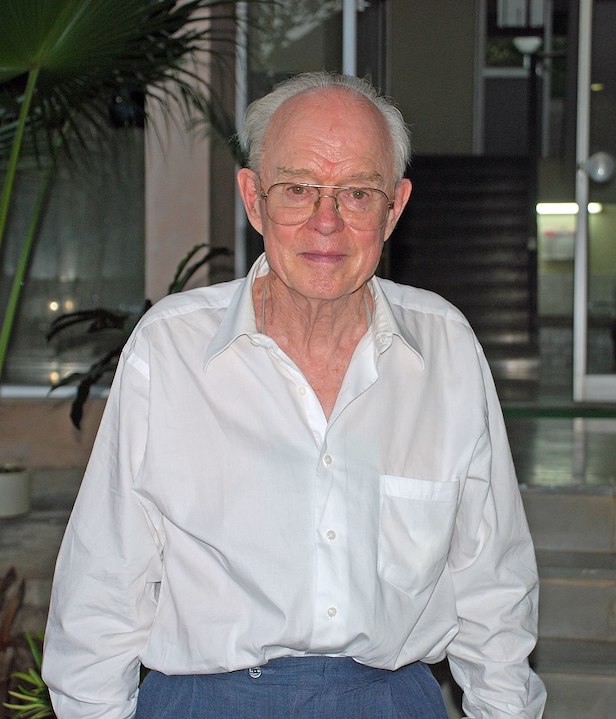Heroes of Space: Eugene Parker
His work in the field of solar physics changed our understanding of the Sun

Parker was awarded the National Medal of Science in 1989. Image credit: Janandd
Eugene Parker is an American astrophysicist that has dedicated his life’s work to understanding the elusive and volatile nature of our Sun. His work as a professor at the Enrico Fermi Institute at the University of Chicago, where he still currently resides, changed the way we see the influential ball of burning gas that sits at the centre of our Solar System. Parker’s accomplishments in the field are the reason why NASA have named the 2018 Solar Probe after him, making it the first time the organisation have named a spacecraft after a living individual.
Born on 10 June 1927 in Houghton, Michigan, United States, Parker also received his Bachelor of Science degree in physics from the Michigan State University in 1948. He then went on to gain his Ph.D. from the California Institute of Technology (Caltech) in 1951, and before long he was teaching at the University of Utah. It was in 1955 where his extensive and fruitful career at the Enrico Fermi Institute began.
In 1958, Parker presented a paper titled “Dynamics of the interplanetary Gas and Magnetic Fields”. This paper suggested that stars, including our Sun, emit vast amounts of energy in a complex system of plasma, magnetic fields and energetic particles known as solar winds. These winds are the driving force behind the energetic particles that permeate throughout the Solar System, but it wasn’t until roughly 50 years later that this could actually be proven.
In the late 20th and early 21st century, there was a deployment of space observatories dedicated to observing the nature of the Sun. For instance, the joint NASA and European Space Agency spacecraft, the Solar and Heliospheric Observatory (SOHO), which had a payload of 12 instruments dedicated to measuring different aspects of the Sun’s behaviour.
The evidence provided from these observatories is what led to Parker being awarded the prestigious Kyoto Prize for Lifetime Achievement in Basic Science in 2003. This is Japan’s highest private global award that has also acknowledged past astronomers like Jan Oort and Edward Lorenz.
Another theory Parker proposed explains the fierce and unexpected heating of the Sun’s outermost region, known as the corona. The corona defies the laws of physics, and no one could explain why the corona was incredibly hotter than the surface of the Sun. Parker suggested that small hot solar explosions – referred to as nanoflares – occur regularly, creating this cocoon of plasma.
It’s because of these original, intelligent and esteemed pieces of work that Parker has filled an impressive award’s cabinet. Some of his awards include the James Clerk Maxwell Prize, the Chapman Medal and the admirable National Medal of Science, which was awarded to him by US President George H. W. Bush in 1989. NASA has also awarded Parker for his scientific achievements in solar physics by naming their revolutionary solar probe after him, which is scheduled for launch in mid-2018. The Parker Solar Probe will probe the outer corona, making it the first-ever mission to ‘touch’ the Sun.
Keep up to date with the latest news in All About Space – available every month for just £4.99. Alternatively you can subscribe here for a fraction of the price!




